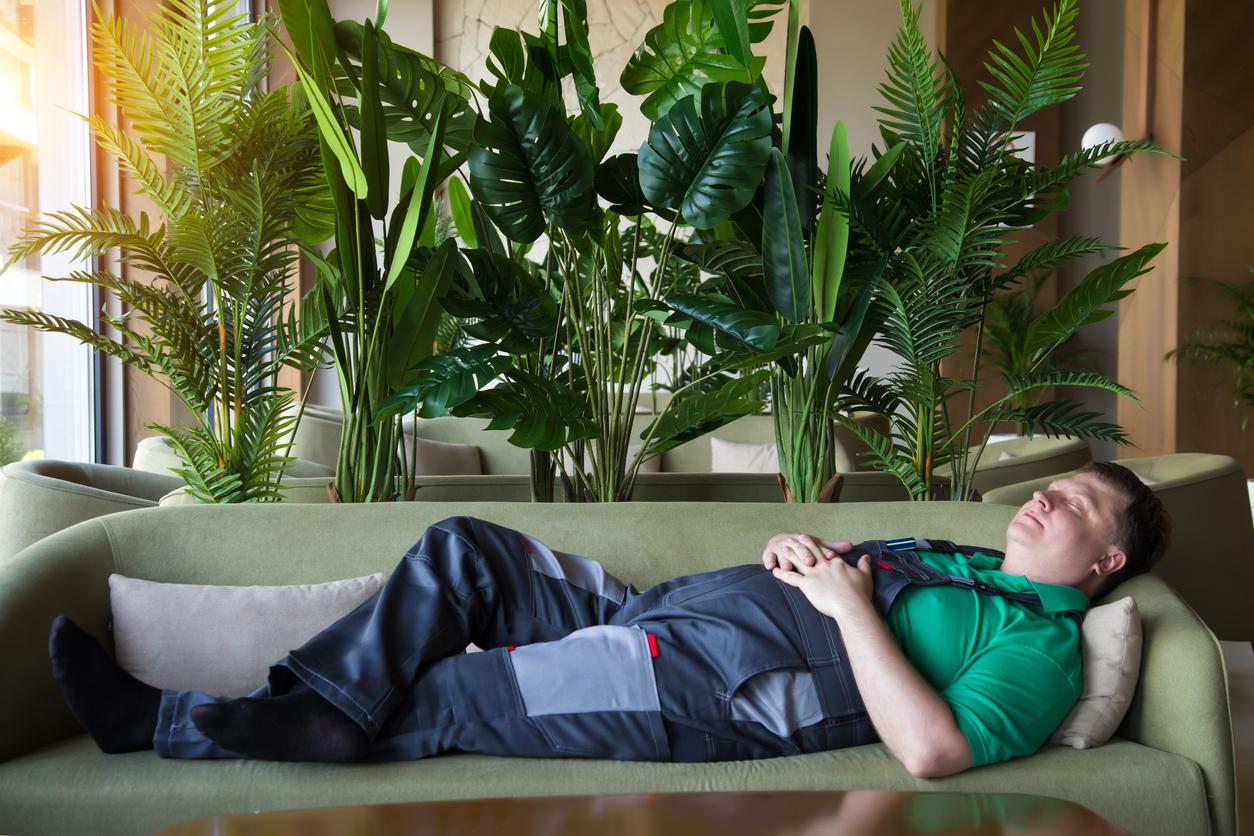Accumulated fatigue and stress can have deleterious effects on our physical and mental health. However, a simple and effective solution exists to combat this fatigue: the short nap.

- Improved cognitive performance: A short nap helps you stay alert and improve decision-making and memory skills.
- Stress Reduction: It lowers cortisol levels and improves mood, helping to manage daily stress.
- Strengthening the immune system: Napping allows the body to recover and strengthen its defenses against infections and diseases.
In our modern society, where hectic lifestyles and busy workdays are the norm, lack of sleep has become a public health problem. However, we must consider the benefits of a short nap that should be incorporated into our daily routine.
A short nap, also known as a power nap, typically lasts between 10 and 30 minutes. Unlike a long nap, which can make you feel sleepy and disrupt your nighttime sleep cycle, a short nap is designed to provide a quick recovery without these unwanted effects. It focuses primarily on the early stages of light sleep, avoiding the deep sleep stages that can make waking up difficult.
The benefits of a short nap
Improved alertness and cognitive performance
Research shows that a short nap can significantly improve alertness and cognitive performance. Even a 10-minute nap can help reduce sleepiness and improve attention, memory, and decision-making. This is especially beneficial for people who need to stay alert and perform, such as healthcare professionals, drivers, or those who work in demanding environments.
Stress reduction and mood improvement
Short naps have positive effects on mood and stress. They reduce levels of cortisol, the stress hormone, and increase levels of serotonin, a neurotransmitter that contributes to well-being and relaxation. Taking a few minutes to rest can reduce irritability, anxiety and tension, improving the quality of daily life.
Strengthening the immune system
Sleep plays a crucial role in maintaining a healthy immune system. A short nap can help boost immune defenses by allowing the body to recover and repair itself. This is especially important for people who don’t get enough sleep at night or who are under high levels of stress, which can weaken the immune system and increase susceptibility to infections and illnesses.
How to optimize a short nap?
Choosing the right time
To get the most out of a short nap, it’s important to time it right. The most effective time to nap is usually between 1 and 3 p.m., when postprandial (after-lunch) sleepiness sets in and alertness naturally decreases. Napping too late in the afternoon or evening can disrupt nighttime sleep.
Create an enabling environment
Creating a calm and comfortable environment is essential for an effective nap. Finding a quiet place, reducing sources of light and noise, and getting into a comfortable position are key steps to making it easier to fall asleep quickly and fully enjoy the benefits of napping.
Limit the duration
Nap duration is crucial. To avoid drowsiness and sleep inertia, it is recommended to limit naps to 10-30 minutes. Using an alarm to wake up on time can help to respect this duration. A 10-minute nap can be enough to revitalize, while a 30-minute nap allows for deeper recovery without entering the deep sleep phases.
Napping in the workplace
More and more companies are recognizing the benefits of napping for their employees. Some companies, particularly in Silicon Valley, have set up nap rooms or rest pods to encourage employees to take restorative breaks. These initiatives show that napping is not only beneficial for the individual, but also for productivity and creativity within the company.
Despite the evidence of the benefits of napping, it is still often perceived negatively in many cultures, associated with laziness or unprofessionalism. Changing this perception is crucial to integrating napping as a legitimate and beneficial wellness practice. Educating employers and employees about the benefits of napping can help create a healthier and more productive work environment.
Integrating naps into daily life
To make napping part of your daily routine, it’s important to schedule a specific time during the day. Whether it’s during your lunch break or mid-afternoon, taking time to rest can have lasting positive effects on your health and well-being.
Listening to your body and recognizing the signs of fatigue is essential. Rather than fighting drowsiness with caffeine or other stimulants, it may be more beneficial to take a few minutes to rest and revitalize yourself naturally.
Short naps are a simple yet powerful practice to improve alertness, reduce stress, and strengthen the immune system. By incorporating a 10-30 minute nap into our daily routine, we can not only improve our personal well-being, but also increase our productivity and quality of life. Changing mindsets and encouraging this practice within companies and institutions can lead to healthier and more efficient work environments.
















